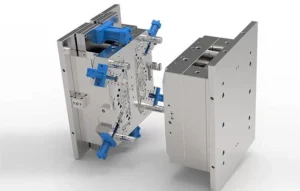Introduction
The temperature inside the mold during center console injection molding is the most important variable in injection molding – no matter what kind of plastic, it must ensure that the mold surface is basically wet. A hot mold surface keeps the plastic surface liquid long enough to build pressure in the cavity. If the cavity is filled and the cavity pressure can press the soft plastic against the metal before the frozen skin hardens, then the replication of the cavity surface is high.

On the other hand, if the plastic entering the cavity under low pressure pauses, no matter how short the time, then its slight contact with the metal will cause stains, sometimes called gate stains.
For each plastic and plastic part, there is a limit to the mold surface temperature, exceeding which one or more undesirable effects may occur (for example: the component can overflow with flash). Higher mold temperatures mean less resistance to flow.
On many injection molding machines, this naturally means faster flow through the gate and cavity, and because the injection molding flow control valve used does not correct for this change, faster filling will cause higher effective pressures in the gate and cavity.
Flash may be caused. Because the hotter model does not freeze the plastic that enters the flash area before high pressure is built, the melt can flash around the ejector pin and overflow into the parting line gap. This indicates that good injection rate control is required, and some modern flow control programmers can do this.
In general, increasing mold temperature will reduce the plastic condensation layer in the cavity, making it easier for the molten material to flow in the cavity, resulting in a larger part weight and better surface quality. At the same time, the increase in mold temperature will also increase the tensile strength of the part.
Mold insulation methods
Many molds, especially engineering thermoplastics, operate at relatively high temperatures, such as 80 degrees Celsius or 176 degrees Fahrenheit. If the mold is not insulated, the heat lost to the air and center console injection molding machine can easily be as much as the heat lost to the shot cylinder.
Conclusion
So insulate the mold frame and, if possible, the surface of the mold. If you are considering using a hot runner mold, try to reduce the heat exchange between the hot runner part and the cooled injection molded part. This method can reduce energy loss and preheating time.
